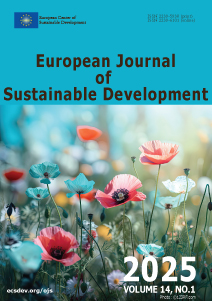Child Labor Prevention and Supply Chain Sustainability: Evidence from German Outdoor Textile Companies
DOI:
https://doi.org/10.14207/ejsd.2025.v14n1p39Keywords:
child labor, supply chain, garment industry, OECD guidelinesAbstract
The aim of this article is to present the measures that German textile companies in the outdoor industry are taking to minimize the risk of child labor in their supply chains. To this end, five company sustainability reports and a company assessment by the independent Fair-Wear-Foundation are evaluated as examples. The measures are assigned to predefined categories in accordance with the OECD guidelines. In a second step, subcategories are formed for the measures assigned to the main categories. The data analysis shows that companies are already taking a variety of measures to minimize the risk of child labor in their supply chains. The measures mainly focus on the companies' direct suppliers (Tier-1). Only few measures are taken regarding the deeper supply chain, even though the risk of child labor is rated as particularly high here. Contractual obligations between suppliers and audits along the entire supply chain are discussed as a measure that can contribute to reducing the risk in the deeper supply chain.
Keywords: child labor, supply chain, garment industry, OECD guidelines
Downloads
Published
How to Cite
Issue
Section
License

This work is licensed under a Creative Commons Attribution-NonCommercial 4.0 International License.





